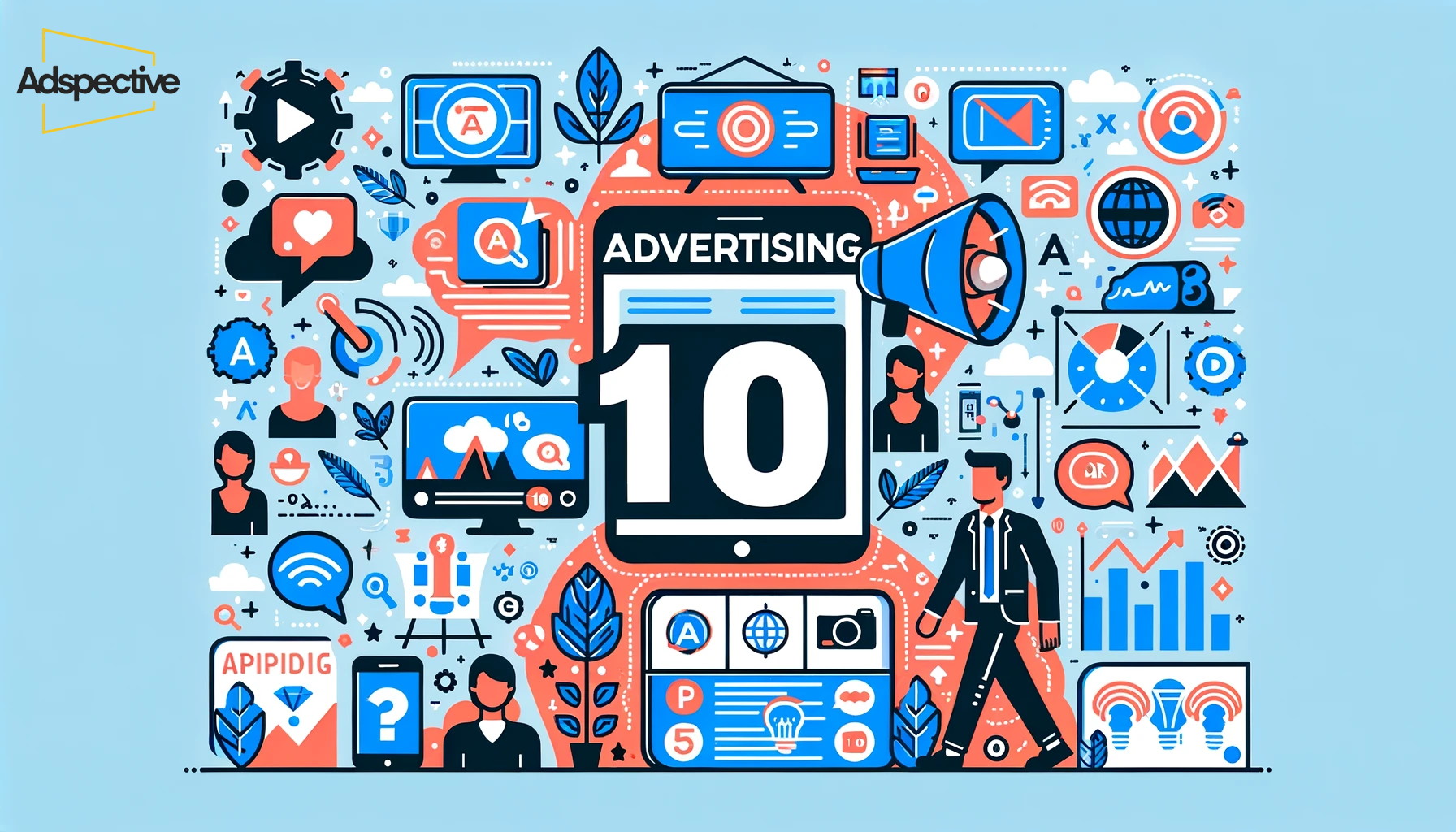
We are halfway 2024 and the advertising landscape is undergoing a significant transformation. With technological advancements and evolving consumer behaviors, marketers must adapt to stay competitive and relevant. The rise of artificial intelligence, the takeover of social media platforms, and the growing importance of privacy have all contributed to a dynamic environment where traditional methods are continuously being challenged and redefined. We collected the top 10 advertising trends for 2024 from the top ads blogs highlighting the strategies and technologies that are shaping the future of marketing.
Let’s go!
AI-Powered Advertising and Virtual Product Placement
Artificial intelligence (AI) is revolutionizing the digital marketing space. AI tools are becoming indispensable for automating routine tasks, optimizing advertising spend, and creating personalized ad experiences. These tools analyze consumer data, predict trends, and help marketers craft highly targeted campaigns that enhance both efficiency and effectiveness (Mediatool) (HubSpot Blog) . They can also include super realistic virtual product to new and existent video content keeping an evergreen advertising offer and an untouched audience experience.
Short-Form Video Content
Short-form video content continues to dominate the digital advertising landscape. Platforms such as TikTok, Instagram Reels, and YouTube Shorts cater to the fast-paced attention spans of modern audiences. These videos are quick, engaging, and highly shareable, making them essential for brands looking to connect with their audience on a personal level (HubSpot Blog).
Social Commerce
The integration of e-commerce capabilities within social media platforms is experiencing a significant boom. This trend, known as social commerce, allows businesses to convert social media interactions directly into sales, providing a seamless shopping experience. The global market value of social commerce transactions is expected to reach approximately $8.5 trillion by 2030, underscoring its growing importance.
Influencer Marketing
Influencer marketing remains a vital component of advertising strategies. Despite growing concerns about authenticity, brands continue to partner with influencers to reach specific demographics. These collaborations help create authentic connections with audiences, often featuring products naturally integrated into the influencer’s daily life.
Native Advertising
Native advertising, designed to blend seamlessly into the surrounding content, continues to be highly effective. Unlike traditional ads that interrupt the user experience, native ads feel more organic, leading to higher engagement rates. Social media platforms and content recommendation engines are popular channels for native advertising.
“With technological advancements and evolving consumer behaviors, marketers must adapt to stay competitive and relevant”
Real-Time In-Game Advertising
The gaming industry presents a lucrative opportunity for advertisers. Real-time in-game advertising integrates ads into the gaming environment without disrupting the player experience. This form of advertising reaches a large and engaged audience, particularly with the expansion of 5G technology (Whatagraph) .
Audio Advertising
Audio advertising is gaining traction as more consumers turn to digital audio platforms like podcasts and music streaming services. This medium offers a unique way to reach audiences who consume content on the go. Dynamic and personalized audio ads provide engaging and monetizable opportunities for brands.
Privacy-First Marketing
With increasing privacy concerns and tighter regulations, advertisers must prioritize transparency and consumer consent. This shift requires innovative approaches to data collection and usage, ensuring compliance with laws such as GDPR and CCPA while maintaining consumer trust.
Augmented Reality (AR) and Virtual Reality (VR)
AR and VR technologies are creating immersive advertising experiences that allow consumers to interact with products in novel ways. These technologies enhance customer engagement and are particularly effective in industries like retail and real estate, providing virtual try-ons and property tours.
Cross-Channel Integration
Integrating marketing efforts across multiple channels is essential for creating a cohesive and comprehensive strategy. This approach includes combining email marketing with social media campaigns, content marketing, and paid advertisements to maximize reach and engagement.
The advertising industry in 2024 is marked by rapid innovation and shifting paradigms. As technology advances and consumer behaviors evolve, advertisers must stay agile and forward-thinking. Embracing these top trends— from AI-powered tools and short-form videos to social commerce and privacy-first strategies—will be crucial for brands aiming to connect with their audiences effectively. By leveraging these trends, marketers can craft compelling campaigns that resonate with consumers, drive engagement, and achieve business goals in an ever-changing digital landscape. The future of advertising is dynamic and exciting, offering endless possibilities for those ready to innovate and adapt.


